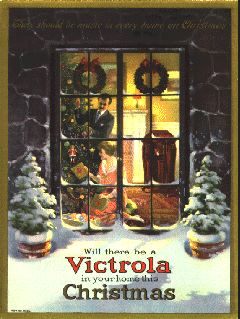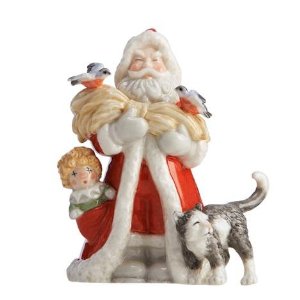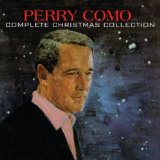|
American Christmas past and presentsChristmas Past and Presents Finding the perfect gift has long been a national pastime. But the celebration of Christmas, and the culture of gift giving that accompanies the holiday, have changed significantly in America over the years. Economic and social pressures have transformed how, and with whom, we celebrate Christmas, altering it from a holiday that was at times illegal, or limited to adult parties, or a gift-giving child-centered extravaganza like today's. There are several popular misconceptions about the origins of the American Christmas version of the holiday. To start, Christmas was actually suppressed in New England's colonial days. The Puritans found no affirmative command to celebrate Christmas in the Bible and, being good Calvinists, frowned on the celebration. They even outlawed it for a time during the 17th century. Opposition to the holiday lingered well into the 19th century, when many New England children were required to attend school on Christmas Day. So take down your Currier & Ives prints of winter sleigh rides to Grandma's house in New England. True New England grandmas disdained Christmas - well into the 1800's. American Christmas - in the Colonial South In contrast, the colonial South provided fruitful soil for importing the traditional English Christmas celebration to this continent. It was a festive and sometimes boisterous adult affair characterized by the Yule log, boar's head and wassail bowl. Southerners put the kids to bed and passed the bowl. During the 19th century, much of the revelry was gradually moved to New Year's Eve, so now it's put the kids to bed and pass the champagne flute. The symbols of Christmas that we know today - St. Nicholas, the Christmas tree and the wonderment of the holiday among children - were brought from the old country by people living in the Middle Atlantic states. The Pennsylvania Dutch, the Swedes of New Jersey and particularly the "true Dutch" of New York shared with their neighbors the traditions of their Northern European heritage, practices that have endured. 
American Christmas - New York City As the importance of New York City in national life increased with the opening of the Erie Canal in 1825, New Yorkers' ideas on celebrating Christmas circulated widely. Washington Irving made frequent use of New York settings and Christmas themes in his writings. Clement Clarke Moore supposedly wrote "A Visit from St. Nicholas" (which begins " 'Twas the night before Christmas...") while a professor at General Theological Seminary. Beginning in the 1860's, the drawings of Santa Claus by Thomas Nast of New York firmly established the appearance of the Jolly Saint as a cultural icon. In 1912, New York City, along with Boston and Hartford, put up the nation's first community Christmas trees. Large New York area department stores, like Macy's and Bamberger's, played their part in particularly innovative ways. They began by hiring Santas for their stores throughout the season. Fittingly, the first school to train professional Santas was established in Albion, N.Y. in 1937. 
Although the Christmas celebration existed in America from the settlers' earliest times, the holiday remained small in scale until the 19th century, when it began to play a larger role in national culture, building on the work of Moore, Nast, Irving and others. It achieved its much larger and truly modern scale only after the transformation of the holiday between 1880 and 1910. Before 1880, American culture was predominantly rural, including the way it celebrated Christmas. Rural Americans gave many Christmas gifts to their families and neighbors. Food, small pieces of woodwork and sewed items were the most popular. Gifts to the immediate family were more substantial than those given to friends, but they remained modest by later standards. While almost all of these gifts were handmade, that imposed no heavy burden on givers because, in a farm economy, they had several months of free time after the harvest to make them. When rural Americans moved to the cities in pursuit of employment and the other attractions of urban life, they brought along their rural habits of gift giving. But their new jobs in factories or offices - unrelated to the agricultural cycle - left them with no off season to fashion presents. As a consequence, they bought small, inexpensive manufactured items to give to their families and their new urban friends.

Perry Como Christmas A roaring fire, something warm to wear (probably a cardigan), and the sounds of Perry Como - such has been the comforting recipe for countless American Christmas celebrations for generations. Now, for the first time, here are ALL of the holiday- themed recordings Perry made for RCA over 36 years, with liner notes by longtime admirer Richard Carpenter! The first eight tracks hail from the original 78 rpm album Perry Como Sings Merry Christmas Music (1946). Next up is the 1953 album Around the Christmas Tree. That’s disc one; disc two leads off with the 1959 stereo album Seasons Greetings from Perry Como, plus the 1967 singles Christmas Bells and Love Is a Christmas Rose. American Christmas Then comes the 1968 album The Perry Como Christmas Album, plus the album outtake Some Children See Him, the single release Christmas Dream and Perrys final holiday song from 1982, the appropriately-titled I Wish It Could Be Christmas Forever. 51 tracks!
American Christmas Wonders of Comfort and Joy Christmas Article Read More Home  Custom Search
|


